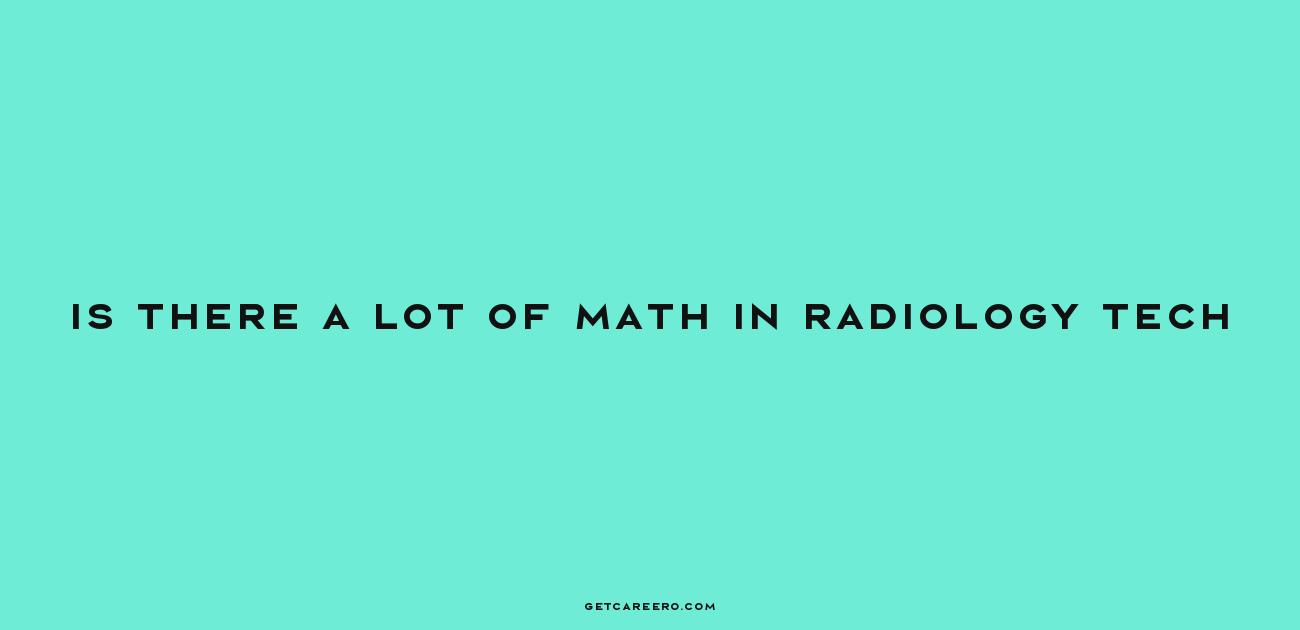Is Math a Major Component of Radiology Tech? – Are you considering a career in radiologic technology but worried about the amount of math involved? Well, fear not! In this blog post, we’re going to explore the role of mathematics in radiology tech and put your mind at ease. Whether you’re a math whiz or someone who breaks out in a cold sweat at the mention of numbers, we’ll break it down for you and show you just how much math you’ll encounter in this fascinating field. So, let’s dive in and discover the truth about math in radiology tech!
The Role of Mathematics in Radiologic Technology
Aspiring radiologic technologists often wonder about the extent to which math plays a part in their future profession. While not as mathematically intensive as fields like engineering or theoretical physics, radiology tech does encompass a substantial amount of mathematics.
Understanding Imaging Techniques Through Math
One of the primary applications of math in radiology tech involves imaging techniques. Radiologic technologists must understand how to calibrate machines and interpret images correctly. This requires knowledge of ratios and percentages, which are fundamental in calculating the correct dosage of radiation to ensure high-quality images while minimizing exposure.
Measurements and Calculations in Radiology
Measurements are an integral part of radiologic technology. Technologists must be adept at using number operations – including multiplication, division, addition, and subtraction – to measure and calculate the precise area that needs imaging or treatment. This precision is crucial for patient safety and the effectiveness of diagnostic procedures.
Radiation Dosage Calculations
The correct radiation dosage is vital in radiology. It’s a balancing act where too little radiation may lead to inadequate images, and too much could harm the patient. Radiology techs use complex equations and ratios to determine the optimal dosage, ensuring the safety and efficacy of radiographic procedures.
The Educational Pathway for Radiologic Technologists
High School Preparation
High school students with an interest in radiology or MRI technology are advised to focus on math and science courses. Classes in anatomy, biology, chemistry, and physics provide a solid foundation for understanding the principles behind medical imaging technologies.
Associate Degree Requirements
For those aiming to become MRI technologists, acquiring an Associate degree is typically the first step. This program not only requires a strong foundation in science and anatomy but also in medical imaging technology, where mathematical principles are applied.
Math and Science in Radiology Tech School
Radiology tech school emphasizes the importance of a robust grounding in both science and math. Students learn to apply mathematical principles to real-world scenarios in medical imaging, preparing them for the critical calculations they will perform in their daily work.
Essential Skills for Radiologic Technologists
Math and Science Proficiency
Excellence in math and science is crucial for radiologic technologists. The ability to perform calculations accurately and understand scientific concepts is directly related to the quality of care they provide.
Communication Skills
Strong communication skills are necessary for explaining procedures, ensuring patient comfort, and collaborating with the medical team. Radiologic technologists often need to convey complex information in a way that is understandable to patients and colleagues.
Critical Thinking
The ability to analyze situations and make informed decisions is another key skill for radiologic technologists. This often involves mathematical reasoning, especially when it comes to adjusting imaging parameters or interpreting results.
Real-world Application of Math in Radiologic Technology
Case Studies: Math in Action
Let’s consider a scenario where a radiologic technologist must determine the correct settings for an X-ray. They would need to calculate the size of the area to be imaged, the appropriate radiation dose, and adjust the machine’s settings. This process involves applying ratios, complex equations, and an understanding of anatomical structure – all grounded in mathematical principles.
Advancements in Imaging Technology
The field of radiology tech is continually evolving with technological advancements. New imaging techniques often come with more complex mathematical models. Technologists must stay abreast of these changes and be able to understand and apply new mathematical formulas as part of their practice.
Conclusion
In summary, while radiologic technology does not require the same level of mathematical expertise as some highly technical professions, it does demand a significant amount of mathematical understanding. Those aspiring to enter this field should be prepared to engage with math on a regular basis, using it as a tool to enhance patient care and improve diagnostic outcomes. With a strong base in mathematics, science, and critical thinking, radiologic technologists can excel in their career and play a pivotal role in the healthcare industry.
FAQ & Common Questions about Radiology Tech
Q: Is there a lot of math in radiology tech?
A: Studying radiography does involve some level of mathematics, as it is important for understanding imaging techniques, measurements, and calculations related to radiation dosage. However, it’s not typically as math-heavy as some other scientific or engineering fields.
Q: What kind of math is used in radiology tech?
A: Mathematics used in radiological imaging includes ratios, percentages, number operations (multiplication, division, addition, and subtraction), complex equations, and ratios.
Q: Does radiology tech require knowledge of calculus?
A: While radiology tech does not require extensive knowledge of calculus, understanding the principles of dimensional analysis and other aspects of calculus can be beneficial, especially when working with machines that use tomography.
Q: Which radiology tech position gets paid the most?
A: The position of Magnetic Resonance Imaging (MRI) Technologist tends to have higher salaries, ranging from $50,000 to $94,000.

